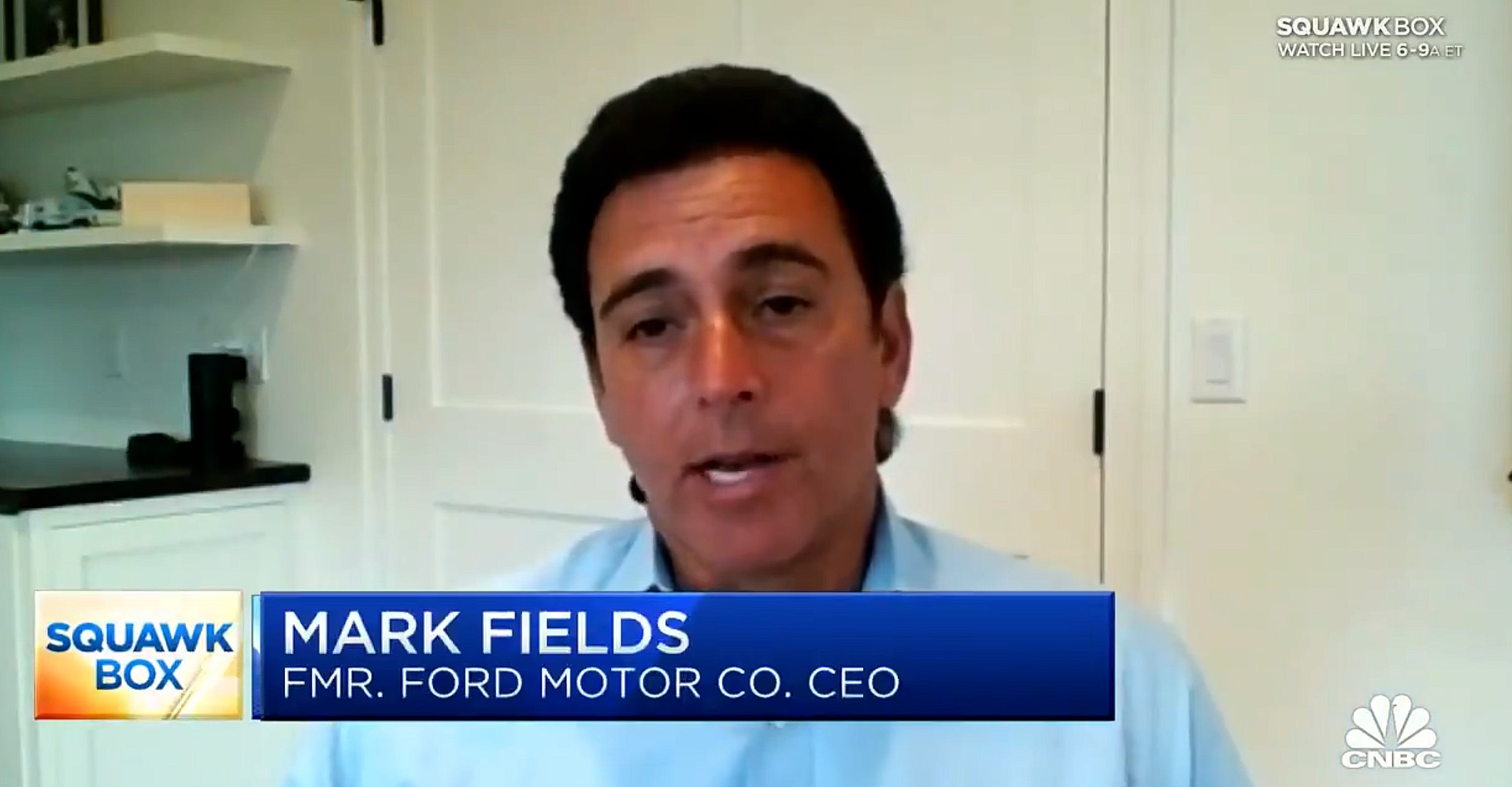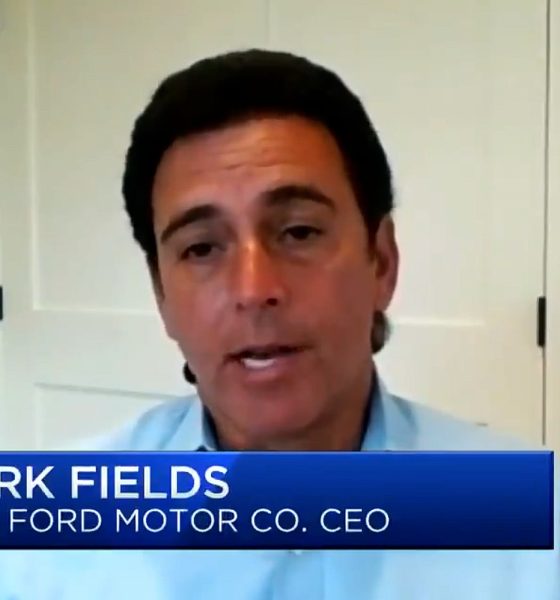

News
Former Ford CEO hammers Tesla’s Autopilot probe: ‘It’s half the vehicles Tesla has ever built’
Former Ford CEO Mark Fields hammered Tesla’s Autopilot probe from the NHTSA earlier today on an episode of CNBC’s Squawk Box, stating that over half of the cars the automaker has ever built are involved in the investigation.
Earlier this week, it was announced the NHTSA was launching a probe into the Autopilot system Tesla has equipped on its vehicles. The investigation involves all four of Tesla’s models from year 2014 to 2021, as it aligns with the specifications that the NHTSA’s Office of Defects Investigation listed in its preliminary report. In total, some 765,000 vehicles are going to be a part of the investigation, although only 11 crashes are listed on the document, which the agency shared with Teslarati.
“The Office of Defects Investigation (ODI) has identified eleven crashes in which Tesla models of various configurations have encountered first responder scenes and subsequently struck one or more vehicles involved with those scenes,” it says.
Fmr. Ford CEO Fields: “It’s literally over half of the vehicles Tesla has ever built.”
Mark Fields, who was CEO of Ford Motor Company from 2014 to 2017, appeared on CNBC this morning to talk about the probe. “This is a significant investigation,” he said. However, Fields misidentifies which Tesla semi-autonomous driving suite is actually under investigation, as he claims it is the Full Self-Driving package. FSD is significantly different than Autopilot based on features and functionality alone, and the NHTSA never mentions the Full Self-Driving suite at any point in its document.
Fields points toward the population density of the investigation as a telltale sign that this could be bad news for Tesla, as over half of its produced vehicles could be subjected to a massive recall that could cost the automaker billions of dollars. Tesla surpassed the 1 million production mark in 2020 and is nearing the 2 million vehicle mark this year.
“If you look at the model years, this is a very large time period they’re investigating: 2014-2021. If you look at the number of potentially affected vehicles, it’s …. literally over half of the vehicles $TSLA has ever built,” auto exec Mark Fields on the NHTSA investigation. pic.twitter.com/kwcUT5Jd47
— Squawk Box (@SquawkCNBC) August 17, 2021
The investigation does focus on a larger than half portion of Tesla’s production population in its short history. However, it is worth noting that the company did not mass produce vehicles until 2017 with the introduction of the Model 3. Additionally, Autopilot is available on all Tesla vehicles and was included as a standard feature in March 2019. Full Self-Driving is not a part of this investigation, and is a separate $10,000 charge on top of the vehicle’s purchase price but is completely optional.
Fields said that the investigation could take between a year and a year and a half based on his knowledge of the NHTSA investigation process. If the NHTSA concludes the Autopilot functionality is not up to its standards, it can issue a recall, Fields added.
The 11 Accidents: a Breakdown
According to the NHTSA documents, the 11 incidents involving a Tesla occurred when the vehicles collided with first responders. However, several investigations have already shown that drivers operating the vehicles in some of the incidents were under the influence of drugs or alcohol (2), had suspended licenses (1), were not following instructions that Tesla outlines for Autopilot use, or was caused by driver inattention (4).
In February 2021, a Tesla driver injured five deputy constables when the vehicle collided with a police cruiser, causing a chain collision. The driver was arrested on suspicion of DWI.
In March 2021, a driver in Lansing, Michigan, with a suspended license, crashed into a police cruiser. The vehicle was operating on Autopilot, but the driver was illegally operating the vehicle.
These are just two examples of what the accidents were caused by, and drivers could be blamed for several instances that the NHTSA lists. Autopilot has been one of the safest ways to operate a motor vehicle, according to statistics from Tesla that showed there was one accident every 4.19 million miles in which drivers had Autopilot engaged. The national average was one crash every 484,000 miles.

News
Tesla China delivery centers look packed as 2025 comes to a close
Needless to say, it appears that Tesla China seems intent on ending 2025 on a strong note.

Tesla’s delivery centers in China seem to be absolutely packed as the final days of 2025 wind down, with photos on social media showing delivery locations being filled wall-to-wall with vehicles waiting for their new owners.
Needless to say, it appears that Tesla China seems intent on ending 2025 on a strong note.
Full delivery center hints at year-end demand surge
A recent image from a Chinese delivery center posted by industry watcher @Tslachan on X revealed rows upon rows of freshly prepared Model Y and Model 3 units, some of which were adorned with red bows and teddy bears. Some customers also seem to be looking over their vehicles with Tesla delivery staff.
The images hint at a strong year-end push to clear inventory and deliver as many vehicles as possible. Interestingly enough, several Model Y L vehicles could be seen in the photos, hinting at the demand for the extended wheelbase-six seat variant of the best-selling all-electric crossover.
Strong demand in China
Consumer demand for the Model Y and Model 3 in China seems to be quite notable. This could be inferred from the estimated delivery dates for the Model 3 and Model Y, which have been extended to February 2026 for several variants. Apart from this, the Model Y and Model 3 also continue to rank well in China’s premium EV segment.
From January to November alone, the Model Y took China’s number one spot in the RMB 200,000-RMB 300,000 segment for electric vehicles, selling 359,463 units. The Model 3 sedan took third place, selling 172,392. This is quite impressive considering that both the Model Y and Model 3 are still priced at a premium compared to some of their rivals, such as the Xiaomi SU7 and YU7.
With delivery centers in December being quite busy, it does seem like Tesla China will end the year on a strong note once more.
News
Tesla Giga Berlin draws “red line” over IG Metall union’s 35-hour week demands
Factory manager André Thierig has drawn a “red line” against reducing Giga Berlin’s workweek to 35 hours, while highlighting that Tesla has actually increased its workers’ salaries more substantially than other carmakers in the country.

Tesla Giga Berlin has found itself in a new labor dispute in Germany, where union IG Metall is pushing for adoption of a collective agreement to boost wages and implement changes, such as a 35-hour workweek.
In a comment, Giga Berlin manager André Thierig drew a “red line” against reducing Giga Berlin’s workweek to 35 hours, while highlighting that Tesla has actually increased its workers’ salaries more substantially than other carmakers in the country.
Tesla factory manager’s “red line”
Tesla Germany is expected to hold a works council election in 2026, which André Thierig considers very important. As per the Giga Berlin plant manager, Giga Berlin’s plant expansion plans might be put on hold if the election favors the union. He also spoke against some of the changes that IG Metall is seeking to implement in the factory, like a 35-hour week, as noted in an rbb24 report.
“The discussion about a 35-hour week is a red line for me. We will not cross it,” Theirig said.
“(The election) will determine whether we can continue our successful path in the future in an independent, flexible, and unbureaucratic manner. Personally, I cannot imagine that the decision-makers in the USA will continue to push ahead with the factory expansion if the election results favor IG Metall.”
Giga Berlin’s wage increase
IG Metall district manager Jan Otto told the German news agency DPA that without a collective agreement, Tesla’s wages remain significantly below levels at other German car factories. He noted the company excuses this by referencing its lowest pay grade, but added: “The two lowest pay grades are not even used in car factories.”
In response, Tesla noted that it has raised the wages of Gigafactory Berlin’s workers more than their German competitors. Thierig noted that with a collective agreement, Giga Berlin’s workers would have seen a 2% wage increase this year. But thanks to Tesla not being unionized, Gigafactory Berlin workers were able to receive a 4% increase, as noted in a CarUp report.
“There was a wage increase of 2% this year in the current collective agreement. Because we are in a different economic situation than the industry as a whole, we were able to double the wages – by 4%. Since production started, this corresponds to a wage increase of more than 25% in less than four years,” Thierig stated.
News
Tesla is seeing a lot of momentum from young Koreans in their 20s-30s: report
From January to November, young buyers purchased over 21,000 Teslas, putting it far ahead of fellow imported rivals like BMW and Mercedes-Benz.

Tesla has captured the hearts of South Korea’s 20s-30s demographic, emerging as the group’s top-selling imported car brand in 2025. From January to November, young buyers purchased over 21,000 Teslas, putting it far ahead of fellow imported rivals like BMW and Mercedes-Benz.
Industry experts cited by The Economist attributed this “Tesla frenzy” to fandom culture, where buyers prioritize the brand over traditional car attributes, similar to snapping up the latest iPhone.
Model Y dominates among young buyers
Data from the Korea Imported Automobile Association showed that Tesla sold 21,757 vehicles to the 20s-30s demographic through November, compared to BMW’s 13,666 and Mercedes-Benz’s 6,983. The Model Y led the list overwhelmingly, with variants like the standard and Long Range models topping purchases for both young men and women.
Young men bought around 16,000 Teslas, mostly Model Y (over 15,000 units), followed by Model 3. Young women followed a similar pattern, favoring Model Y (3,888 units) and Model 3 (1,083 units). The Cybertruck saw minimal sales in this group.
The Model Y’s appeal lies in its family-friendly SUV design, 400-500 km range, quick acceleration, and spacious cargo, which is ideal for commuting and leisure. The Model 3, on the other hand, serves as an accessible entry point with lower pricing, which is valuable considering the country’s EV subsidies.
The Tesla boom
Experts described Tesla’s popularity as “fandom culture,” where young buyers embrace the brand despite criticisms from skeptics. Professor Lee Ho-geun called Tesla a “typical early adopter brand,” comparing purchases to iPhones.
Professor Kim Pil-soo noted that young people view Tesla more as a gadget than a car, and they are likely drawn by marketing, subsidies, and perceived value. They also tend to overlook news of numerous recalls, which are mostly over-the-air software updates, and controversies tied to the company.
Tesla’s position as Korea’s top import for 2025 seems secured. As noted by the publication, Tesla’s December sales figures have not been reported yet, but market analysts have suggested that Tesla has all but secured the top spot among the country’s imported cars this year.








